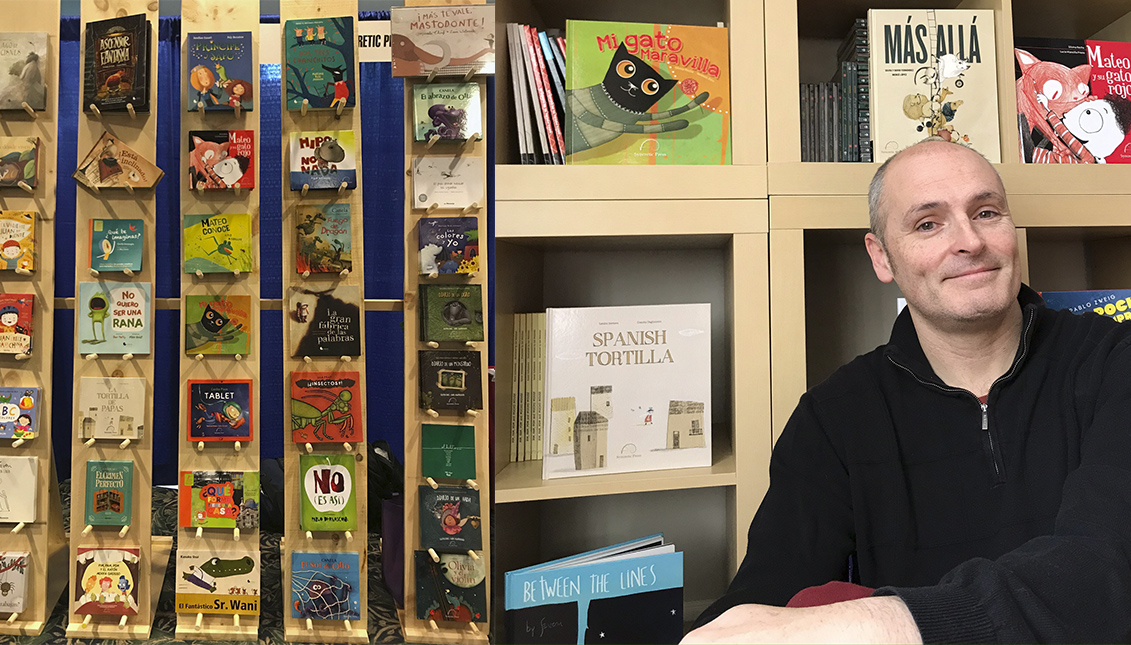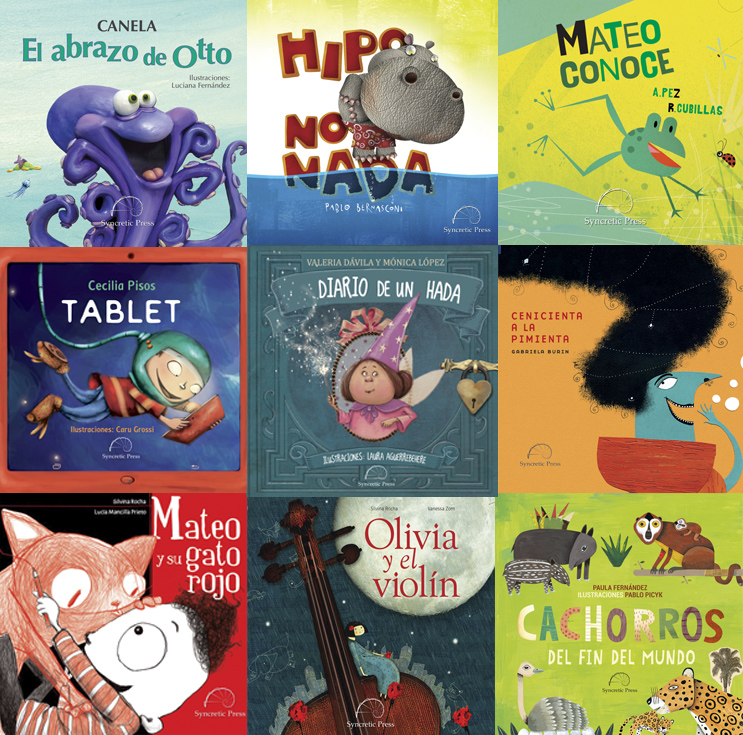
Syncretic Press, the Hispanic publisher of big questions for little readers in the U.S.
Publishing in times of a pandemic is not easy, but Enrique Morás has managed to make children's literature in Spanish a bridge between cultures and continents.
Once upon a time, there was an Uruguayan archaeologist whose path led him into finance and who worked for many years in banking. However, he was always fantasizing about what it would be like to explain history to children.
Until one day, under the influence of Pepe Mujica — the former president of Uruguay who always talked about the finiteness of time — the archaeologist began to rethink what he was doing with his life and what he was really passionate about. He then decided to "leap into uncertainty."
That is how Enrique Morás, who moved to the United States in early 2000, ended up founding Syncretic Press, a small children's publishing house based in Delaware and devoted to publishing beautiful books in Spanish for Hispanic children and their families in the United States. It's also for young readers who, even if they're not Latinos, could discover the beauty of a language and a cultural source of countless stories — especially unconventional ones.
"We look for books that generate more questions than answers," Enrique told AL DÍA News and admitted that, although the reading habits of Spanish-speaking families in the U.S. are not the same as in Latin America, Spanish-language children's literature published in America has enormous potential.
With more than 60 million Latinos in the country — 41 million of whom speak Spanish — the books published by Syncretic Press find a market with the public libraries and school districts, especially with Dual Language Immersion schools that offer their Latino and non-Latino students a bilingual education requiring "authentic" stories that help children learn a language and accompany them as they discover the world.
"The core of the publishing house is children's books in Spanish, but we have also started to publish English translations of some of favorite titles, such as Hereafter, which is a book about different beliefs of what happens after death. There is a circus of animals hanging from a tightrope. As each one of them falls, we learn what each animal thinks of the Beyond. Without naming the religions, each animal shows its perspective: Islamic, Cristian with Mexican folklore, Native American and many more. It ends with the question: What do you believe?" explained the editor.

Although most of the authors and illustrators Syncretic Press works with are Latino or Latin American, the publisher sometimes finds little foreign gems that he can't help but publish. Like El Conejo Plano (Flat Rabbit), a story with very peculiar humor by Bardur Oskarsson, an author and illustrator from the Faroe Islands. It tells the story of a poor squashed rabbit that a dog and a rat find in the middle of the road.
"Small publishers like us face many challenges, and translations is one of them. Spanish teachers prefer 'authentic' books in Spanish, so when at times you introduce a title that was originally written in Danish, like El Conejo Plano, you have to explain to them that the book has been translated with great care," said Morás, noting that, as a publisher, he tries to maintain a balance between what readers are looking for and the stories that interest him.
Added to all these challenges is distribution. In a sector with very short margins, and in a country where the big publishing industry has always prioritized books in English, it is often difficult to find a bookshop committed to a Spanish-language catalog.
If we add to that a global pandemic, the challenge is there for the taking.
"In essence we are a Latin American publisher promoting authentic Latin American authors and illustrators, but based on the United States."
"It's a lot of work, and the pandemic has caused sales to drop, but the good thing about being small is the flexibility and the fact that you don't have a large infrastructure," said Enrique. "Though you can't cast aside big distributors and the institutional market, there are lots of opportunities reaching out directly to Spanish-speaking families through social media and other channels.
Syncretic Press' website, which is growing every day with new projects, has become a gateway to fantasy for Hispanic families and an activity facilitator — such as the Spanish Book Club, where teachers can participate at no cost and make Syncretic Press’s books more affordable for their students.
Similarly, the small company offers online read-aloud sessions to help schools and libraries adapt to pandemic times.
"I worry about libraries because they have always played a role as a community center in the United States, something that doesn't happen in Latin America. But the Latino population that comes to the country doesn't have that built-in participation and sense of community around the library," Enrique said.
Syncretic Press is in a tiny but resilient galaxy of publishers who stubbornly publish in Spanish in an English-speaking ocean that has historically steamrollered over linguistic and cultural diversity.
But this does not make it an island; rather, the publishing house has been able to build bridges through fairs in Latin America and Spain and weave a network of cooperation with illustrators, authors, and publishers from other continents.
"In essence we are a Latin American publisher promoting authentic Latin American authors and illustrators, but based on the United States," admitted Enrique, stressing the importance of that fact. Part of Syncretic Press's lifeblood is to be a bridge in the middle of this sea.
"Latinos in the United States experience a very dynamic cultural balance. There is a constant tension between mother land traditions that are fully Latino and the American universe they are immersed in" he explains. "Keeping this bridge open with the Hispanic culture through the link with small publishers in South America helps to fuel that constant fire in an environment where you are a minority facing al almost inevitable process of acculturation," he concluded.
RELATED CONTENT
AL DÍA recommends:
By Eva Mastrogiulio.
What happens to a girl, owner of her time, when she finds a watch for the first time? After succumbing to the tyrant of seconds, like any adult, the young girl surprises us by taking control of the clock and time.
Cenicienta a la pimienta (Cinderella with Pepper)
By Gabriela Burin
An anomaly in the Syncretic Press catalog which does not usually publish classic tales, Cinderella with Pepper features an alternative Cinderella and a story written in rhyme and beautifully illustrated with collages and textures.
Mateo y su gato rojo (Mateo and his red cat)
By Silvia Rocha and illustrated by Lucía M. Prieto
The cat that Mateo has drawn has lost his smile. How will he get it back? By drawing! It is an original story illustrated with red and black pencil and a surprising open ending.
Visit the Syncretic Press website for more books where "and they were happy and ate partridges" is not the end but the beginning of a question.












LEAVE A COMMENT: